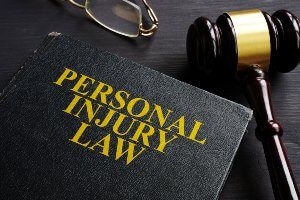 Every day, accidents occur and people suffer injuries. While some situations are only accidents, others are caused by negligence and could have been avoided.
Every day, accidents occur and people suffer injuries. While some situations are only accidents, others are caused by negligence and could have been avoided.
Understanding and proving negligence is key to a successful personal injury claim. Below, review the definition of this legal concept and the five elements that make up a negligence case. We also discuss how to prove another party caused someone to be injured.
At Sigman Janssen, we have decades of experience navigating these complex cases and securing compensation for our clients. There are no upfront fees for our services and the initial legal consultation is free. Our Oshkosh personal injury lawyers are here to help you during this challenging time.
Have questions about pursuing an injury case? Call Sigman Janssen: (877) 888-5201.
What Does Negligence Mean?
Negligence is a fundamental concept in personal injury law. Negligence is more than carelessness. It refers to the failure to act with reasonable care, resulting in harm to another person.
Most personal injury claims are based on the theory of negligence. Victims whose lawyers can provide evidence of negligence may be able to recover compensation for the effects of their injuries. This may include medical expenses, lost wages and various other damages.
There are many nuances involved in proving negligence, especially when it comes to linking an injury to a failure to act with reasonable care. Sigman Janssen has many years of experience gathering evidence and building robust arguments about how and when negligence occurred.
Five Elements of Negligence in Personal Injury Claims
Negligence has five elements, and your lawyer must prove all of them to win a lawsuit or secure a favorable settlement of an insurance claim. Each element plays a crucial role in building a strong case.
- Duty of care: Every individual has a legal responsibility, or duty of care, to avoid causing harm to others. This duty varies based on the relationship and situation. For instance, a driver is obligated to follow traffic laws to prevent accidents.
- Breach of duty of care: This occurs when someone fails to meet their duty of care. Common examples include a driver running a red light or disregarding other traffic laws. There are many ways a duty of care can be breached. Often there is a breach because of someone’s actions. However, sometimes people breach a duty of care by failing to act, such as a property owner failing to clean up a wet spot on the floor.
- Causation: It is not enough to prove a duty and its breach. You must also show that this breach caused your injury. For example, a red-light violation that leads directly to an accident. You must also show the breached duty of care is the direct cause of your injury. Cases can become much more complicated if factors other than the breached duty of care contributed to your injury.
- Foreseeability of harm: This means the harm you suffered was a foreseeable result of the breach. In our example, it is foreseeable that running a red light could cause a collision. If the possibility of harm is not something the other party could have expected, there might not be a valid case. This element is often easier to prove than others.
- Existence of damages: Finally, there must be actual damages resulting from the negligence, like physical injuries or emotional trauma. If another party breached a duty of care but there were no injuries or damages, there is no case. The goal of a personal injury case is to secure compensation for damages that were caused by another’s actions. Your lawyer must present evidence of damages, such as medical bills and documentation of missed days from work.
How Do You Prove Each of These Elements of Negligence?
Proving negligence requires substantial evidence. For example, in a car accident case, lawyers can often establish a driver’s duty of care by citing traffic laws. A traffic citation can help prove the driver broke the law. This evidence can be supplemented with things like:
- Witness statements
- Video surveillance footage
- Pictures of the damaged vehicles may further indicate how and why the crash occurred
- Testimony from accident reconstruction experts
- And more
Your medical records and testimony from medical experts can also help prove causation. which means your injuries were a direct result of a breached duty of care. Sometimes lawyers have the victim’s doctor provide testimony about how the injuries occurred and their severity. It is critical that you do not disclose your medical records to the insurance company without assistance from an experienced lawyer.
Sigman Janssen employs a meticulous approach in gathering this evidence. Our experience in handling personal injury cases in Wisconsin equips us with the knowledge to identify and compile compelling evidence. We work closely with medical experts to establish a clear link between the negligent act and the injuries sustained.
Injured By Another’s Negligence? Call Sigman Janssen To Discuss the Accident
If you are facing a personal injury due to someone else’s negligence, Sigman Janssen offers personalized legal advice and support. With our experience and no upfront cost policy, we are committed to helping you through this unexpected crisis.
We manage every step of your insurance claim and/or lawsuit, communicating with the involved parties, gathering evidence and keeping you informed at every stage.
Find out if you may have a case. Phone: (877) 888-5201.